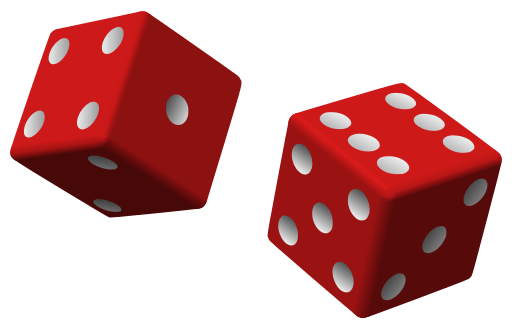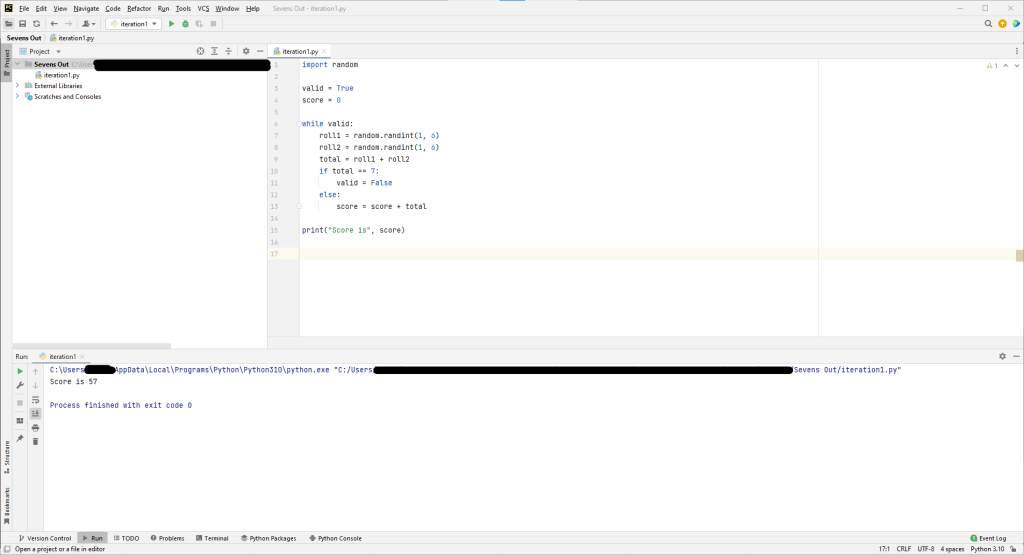Iteration 2
In the second iteration of the development of Seven Out we add an outer loop so that the game will continue until the player’s total score equals or exceeds the target score – in this case 200. In the pseudocode shown below the outer loop is modelled as a while loop with a condition to check whether the target score has been met. The algorithm used inside of the outer loop is the same as that used in iteration 1 except a new variable is used to keep track of the score for the current round.
set target to 200
set score to 0
while score < target
set round_score to 0
loop
set total to sum of two random integers between 1 and 6
if total = 7
then
exit loop
else
add total to round_score
end if
end loop
output round_score
end while
output score
The code written for this iteration is similar to that from iteration 1. New lines of code are highlighted in the listing below. Line 6 contains a while loop with a condition that checks that the score is less than the target. The while loop will continue while
this condition is true. In particular this while loop will always run at least once. Line 7 creates a new variable to represent the score for the current round - the value for this variable is reset to zero each time the outer loop is repeated. Line 17 updates the round score by adding the current dice total. Note that when a total of 7 is rolled this is not added to the round score.
import random
target = 200
score = 0
while score < target:
round_score = 0
valid = True
while valid:
roll1 = random.randint(1, 6)
roll2 = random.randint(1, 6)
total = roll1 + roll2
if total == 7:
valid = False
print(total)
else:
round_score = round_score + total
print(total, end=", ")
score = score + round_score
print("You scored", round_score, "this round")
print("Total score is", score)
print("Well done. You got to", target)
Line 18 of the code uses an option within the print statement to alter its behaviour. The end option will by default print a newline character at the end of the output, meaning that subsequent output will appear on a new line. In this case we replace the default behaviour and instead end with a comma followed by a space. This means all of the totals for a round will be printed out on one line.
Output generated by running the game is shown below. For each round a list of comma-separated dice totals are shown, followed by the total for that round and then the total score. At the end of the game the player's total is shown.
8, 2, 3, 8, 2, 4, 9, 7 You scored 36 this round Total score is 36 9, 5, 8, 10, 7 You scored 32 this round Total score is 68 7 You scored 0 this round Total score is 68 2, 9, 5, 11, 4, 4, 10, 6, 11, 11, 3, 4, 7 You scored 80 this round Total score is 148 3, 6, 9, 7 You scored 18 this round Total score is 166 6, 5, 5, 4, 7 You scored 20 this round Total score is 186 8, 6, 4, 3, 6, 6, 7 You scored 33 this round Total score is 219 Well done. You got to 200

